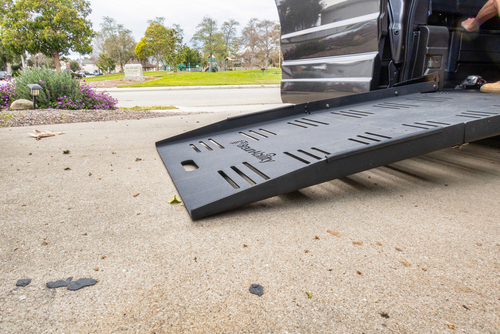
As part of a running series on equity, the National Academies’ Transportation Research Board (TRB) recently laid out in detail the resources aiding transportation accessibility in the U.S. for people with disabilities – an area governed and aided by the federal American with Disabilities Act.
In air travel, preliminary research from a TRB consensus report determined that no major design or engineering challenges stand in the way of exploring the market’s need for and technical feasibility of securing personal power wheelchairs in commercial airplanes. This would be a major boost for non-ambulatory travelers, who are not currently allowed to use their personal wheelchair as a seat when flying – unlike on trains, buses and more.
“People in wheelchairs each have different health needs,” Naomi Armenta, paratransit coordinator for the Alameda County Transportation Commission and a member of the committee that produced the report, said. “Currently, people are potentially put on a flight in a seat that is not appropriate for their unique basic needs. Travelers and airlines risk injury in transfer, in flight, serious damage to a person’s necessary chair, which results in a lack of mobility. In my opinion, what this study shows is that installing wheelchair securements on airplanes is potentially a win-win for the wheelchair user community, airlines, and everyone else vested in potential improvements in transportation for people with disabilities.”
What remains to be tested, in their assessment, is flammability and vertical crash testing. Otherwise, safety concerns have been likely covered by current testing.
Aspects of the TRB are also investigating land use, mobility options and technology evolutions pertaining to public transportation. These include efforts to plan and implement redesigns of U.S. bus networks, and documentation of various models used to enhance the knowledge base of small agencies, like the Ann Arbor Area Transportation Authority (AAATA) of Michigan. In that case, some suspected AAATA of not meeting service-quality obligations for a service model based on greater agency control while retaining cost benefits. However, TRB concluded that splitting the role of contractors and allowing different people to take on different specialties helped refocus the agency on service.
A separate report from the TRB’s Airport Cooperative Research Program laid out innovations and best practices for making air facilities accessible, from pre-trip planning to airport departure. This included implementation of more equal services to non-English speakers and those with sensory processing disorders as well. Other efforts in this area have provided guidance for older travelers and those with disabilities to utilize pedestrian wayfinding systems, overviews of transit systems’ application of new policies beneficial to those with disabilities and more.
Public transit varies from location to location, the TRB noted – but no matter the location, or its model, ways exist to provide paratransit. These should be particularly in mind for certain population groups, which have been determined more likely to possess transportation needs impacting access to health care: the elderly, travelers with disabilities, lower income, those without personal transportation, residents of isolated rural areas, patients with chronic diseases and veterans using the Department of Veteran Affairs’ medical system.